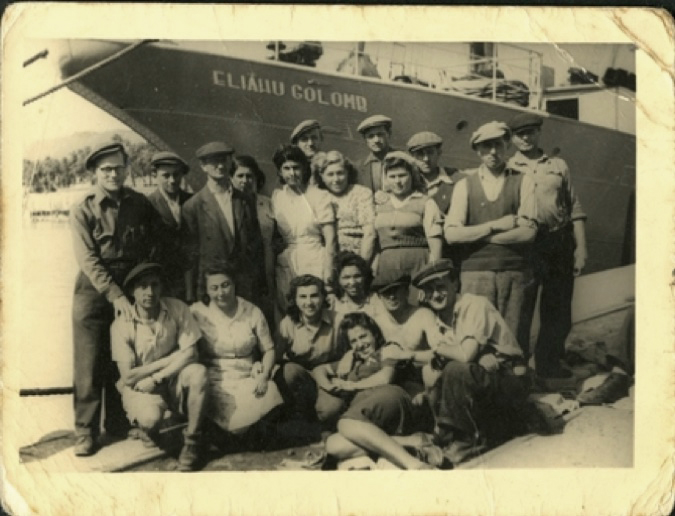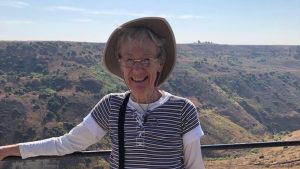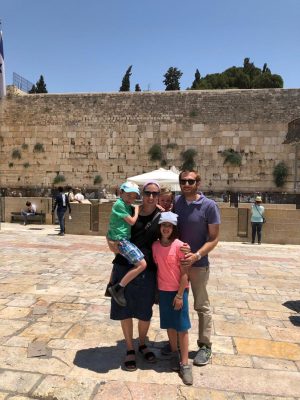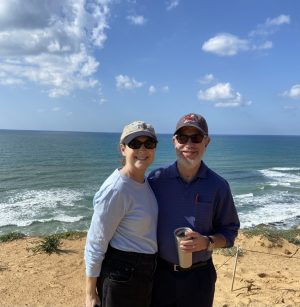Founding member of Zionist Haganah fighters had St. Louis ties
Published February 11, 2022
The chief architect of the Haganah, the Zionist military organization that operated in Israel from 1920 to 1948, has a family connection to St. Louis.
Eliyahu Golomb, a founding member of the Haganah who served on its Command Council, according to the Jewish Virtual Library, was the first cousin of Ruth Levine, whose daughter Myra Bomze lives at Brookdale Creve Coeur, an independent and assisted living facility.
Eliyahu Golomb
Myra never met Golomb, her first cousin once removed, but her daughter-in-law Chris Bomze has studied the life and contributions of the man who was a significant presence in the effort to defend Jewish settlements in Palestine. Chris Bomze is a board member of the National Council of Jewish Women-St. Louis.
“Eliyahu’s father was Naftali Golomb,” Bomze said. “Naftali’s brother Morris was Myra’s grandfather.”
Morris Gollomp — he changed his last name from Golomb — was born in 1867 in Belarus, then part of the Russian Empire. As a teenager, he was sent to live with his cousins, the Rapports, in Cardiff, Wales. His family didn’t want their sons conscripted into the Russian army, which was notoriously unkind to Jewish soldiers. In 1886, Morris immigrated to the United States.
“According to Ruth Levine’s sister Florence, when Morris arrived and went through immigration, he couldn’t spell out his real name so they gave him the name of James May,” said Bomze. “He eventually changed his name back. He opened a women’s dress shop in New York City known as M. Gollomp and Sons.”
Eliyahu Golomb was born in March 1893 in Byellorussia (Belarus). In 1909, Naftali’s family, including 16-year-old Eliyahu, immigrated to Palestine. They all made aliyah.
They all made aliyah
After high school, Eliyahu settled in Kibbutz Degania Aleph, in the north of what would become Israel, where he worked and organized agricultural training programs. When his father died, Golomb returned to Jaffa to run the family flour mill.
He was active in the labor party, but he’s best known for his work in creating a Jewish military presence that represented the Jews in Palestine (Yishuv). Golomb believed all Jews should be involved in their own defense, and he was an important figure in creating field units to defend the Yishuv.
“Eliyahu was convinced that defense of the Jewish communities in Palestine was a global Jewish issue,” Bomze said. “He supported defensive measures against Arab insurgency, but he was firmly opposed to violent retaliatory attacks against Arab civilians.”
He was a founder of the Palmach, the elite unit of Haganah, and trained many future commanders of the Israel Defense Forces. In fact, Haganah is perpetuated in the official Hebrew name of the IDF: Tzva Haganah le-Yisra’el.
Remembering Golomb
Golomb died at age 52 in June 1945, three years before the founding of Israel. Today he is remembered as a military pioneer and hero in Israel. A stamp was issued to honor him in 1978. His home on Rothschild Street in Tel Aviv is now Beit Eliyahu Golomb, the museum of the Haganah. A street is named for him in Jerusalem, and the Eliyahu Golomb Defense Prize is one of Israel’s highest accolades and was awarded this year for the 63rd time.
Eliyahu’s son David also had a notable career. He was born in 1933 and studied economics at the Hebrew University of Jerusalem. He eventually became director of the Institute of Economic Research of the Actions Committee of the Histadrut. In 1977, David Golomb joined the Knesset as part of the new Democratic Movement for Change party. He was elected when the party won 15 seats. He died in 2019.
“The story of Eliyahu Golomb is a source of great pride for Myra’s family,” Bomze said.



















